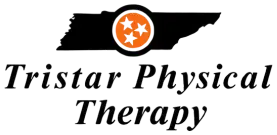Table of Contents
Mapping Intersections Between Physical Therapy and Mental Health: A Scoping Review
Introduction
The coexistence of mental and physical health conditions is widespread, and for optimal outcomes, neither should be treated in isolation. This review aims to map the intersections between physical therapy and mental health, looking at the evidence and clinical practice approaches towards adolescents and adults with mental health disorders, as well as those with physical health conditions.
Methods
A scoping review was conducted by searching several databases, including MEDLINE, CINAHL, PsycInfo, Cochrane, and PEDro. Two independent researchers screened studies of physical therapy practice with participants who had mental health disorders, or research using primary mental health outcomes in physical health conditions or clinicians’ perspectives.
Results
The search yielded 3633 studies, of which 135 met the inclusion criteria. Five studies included adolescents, and most were published since 2015. Mental health diagnoses included schizophrenia, depressive disorders, eating disorders, anxiety disorders, bipolar disorders, somatic disorders, trauma and stressor-related disorders, and varied mental health diagnoses. Forty-one studies had primary mental health outcomes or clinical practice approaches with a mental health emphasis with participants with physical health conditions, including musculoskeletal, neurological, and other conditions. Exercise therapy and physical activity were the predominant interventions in systematic reviews and randomized controlled trials.
Physical Therapists’ Role in Mental Health
The description of physical therapists as participants included four main topics: mental health screening, knowledge, attitudes, and experiences, key practice components, and research priorities. Physical therapy intersects with people experiencing mental health disorders across a broad range of diagnoses and interventions with a small but growing evidence base.
Discussion
Exercise and physical activity studies dominated the highest levels of evidence, but economic evaluations, consumer-driven, or patient experience studies are needed. There is a contrast between the confidence and knowledge of specialized physical therapists working within mental health settings and those in general practice settings. An integrated education system is necessary to improve healthcare outcomes following physical therapy for people with mental health disorders or symptoms.
Conclusion
Physical therapy and mental health intersect across a broad range of diagnoses and interventions with a small but growing evidence base. Exercise and physical activity studies dominate the highest levels of evidence, but economic evaluations, consumer-driven, or patient experience studies are needed. Specialized physical therapists working within mental health settings have more knowledge and confidence than general practice physical therapists. An integrated education system is needed to improve healthcare outcomes following physical therapy for people with mental health disorders or symptoms.
Note: This article was published by Oxford University Press on behalf of the American Physical Therapy Association.

